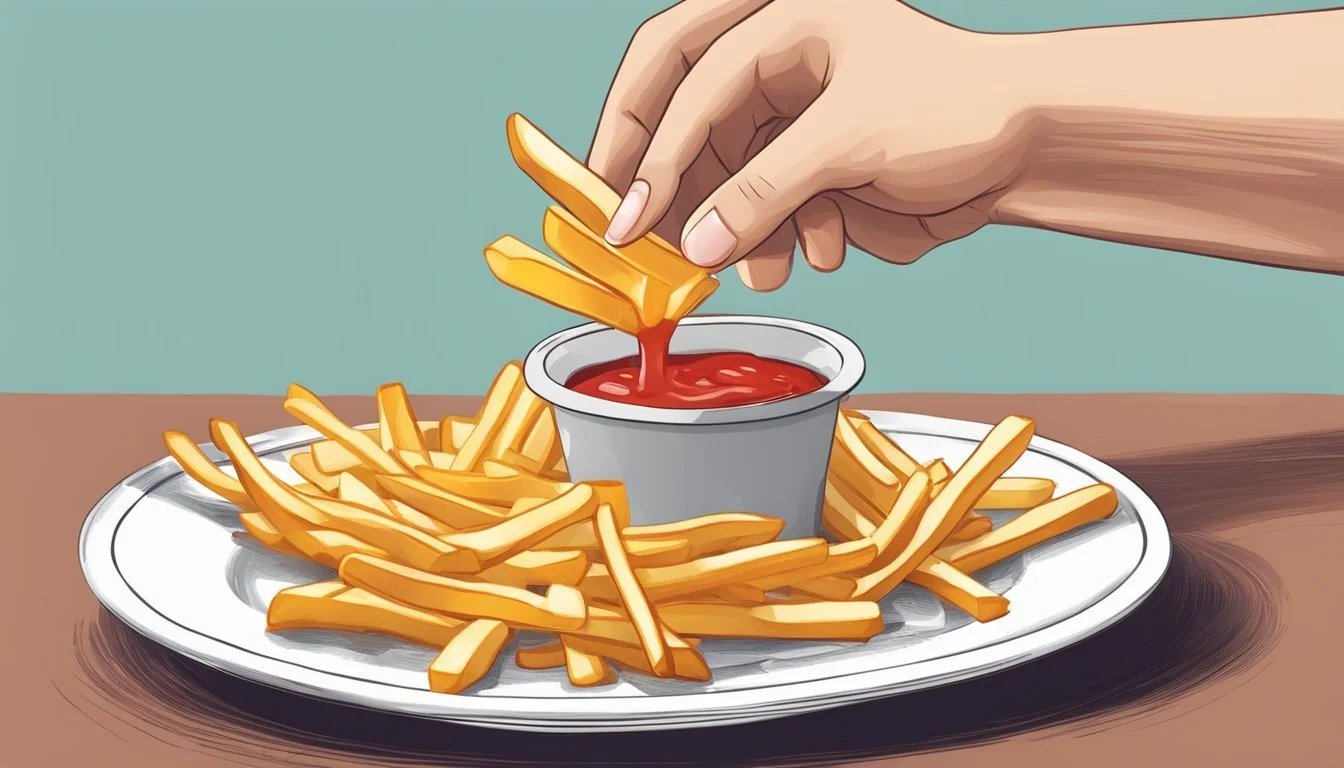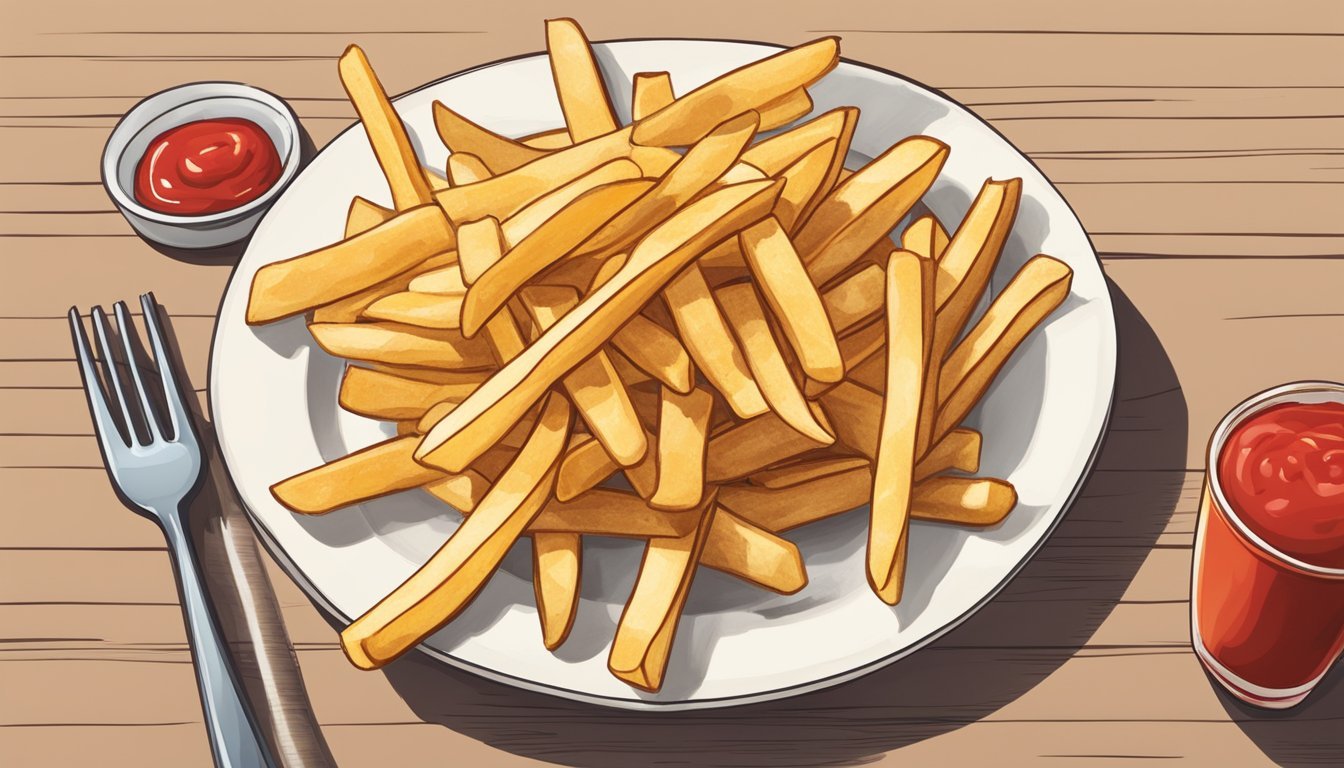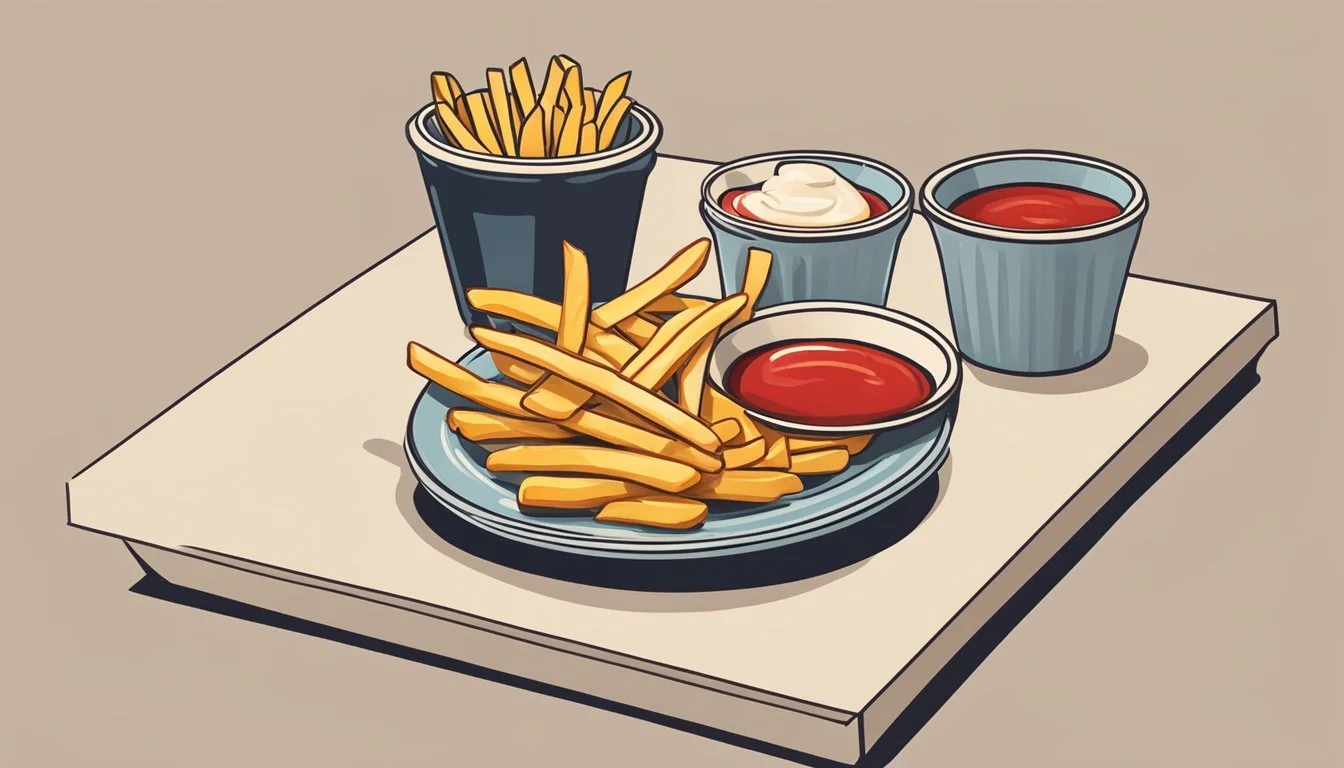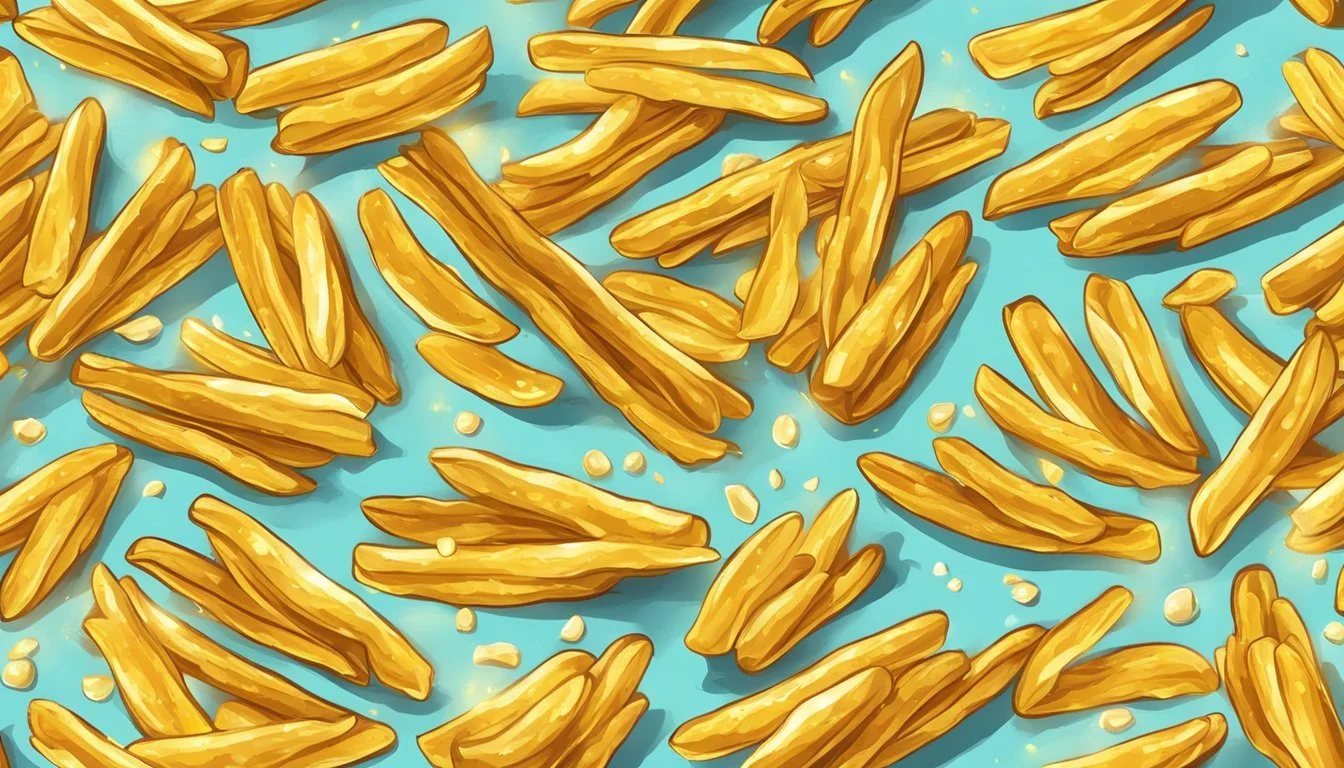How do you eat French fries?
Understanding the Best Practices and Cultural Variations
French fries, a ubiquitous comfort food found on menus across the globe, offer a satisfying crunch and a soft, fluffy interior that has captivated the taste buds of countless diners. While the basic concept of frying strips of potatoes (What wine goes well with potatoes?) remains constant, the manner in which people choose to enjoy French fries can vary significantly. From being a standalone snack to a side dish complementing a variety of main courses, French fries have secured their place in the world of culinary delights.
Connoisseurs of French fries might enhance their experience by experimenting with a range of condiments and toppings. Classic options such as ketchup, mayonnaise, and vinegar are common, but gourmet variations have emerged, with toppings like garlic oil and parmesan offering a sophisticated twist to the traditional fry. Meanwhile, health-conscious individuals approach this dish with more caution, being mindful of portion sizes, considering fries are often high in fat and sodium, which could impact one’s health if consumed in large quantities.
History and Origin
French fries have a rich history, with their origins being a subject of debate between France and Belgium. This simple yet delectable dish made from potatoes has become a staple in global cuisine.
Potato Varieties
Different varieties of potatoes are used to make French fries, with some of the popular choices being Russet potatoes and Idaho potatoes. These types are preferred due to their high starch content, which ensures a crispy exterior and a fluffy interior after frying. Waxy potatoes are less common as they tend to retain their shape and firmness, making them suitable for other cooking methods like boiling or roasting. To a lesser extent, some use the sweet potato, a nutritionally rich alternative, to create a distinct variation of the classic French fry.
French Fries in Global Cuisine
French fries have become a global phenomenon and are served in various forms across the world. In many regions, they are considered a side dish, complementing items like hamburgers or fish and chips (What wine goes well with fish and chips?). However, in places like Belgium, fries are often the main dish, served with generous toppings or dips. The traditional European method involves frying the cut potatoes in beef tallow, attributing to the fries' unique taste and texture that's celebrated in many Francophone regions.
Nutritional Profile
When consuming French fries, one should consider their nutritional makeup, which includes both macro and micronutrient content. Here, we'll inspect calories and fats, along with the vitamins and minerals present in this popular dish.
Calories and Fats
In terms of calories, a typical serving size of French fries from a restaurant, which can be around 1 serving (roughly 150 grams or 5.3 ounces), contains approximately 601.1 calories. This caloric content is comprised of various components, primarily carbohydrates and fats.
French fries' fat content can vary depending on the cooking method. However, it's not uncommon for a single restaurant serving to contain around 29.2 grams of fat. Within these fats, saturated fats may account for a significant amount; on average, they can consist of 10-20% of the total daily value based on a 2,000 calorie diet.
Vitamins and Minerals
Regarding micronutrients, French fries provide a range of vitamins and minerals.
Vitamin C: An antioxidant, Vitamin C aids in immune function and skin health. A single serving can contain up to 9.7 milligrams.
Potassium: With the presence of potato skins, fries can be a reasonable source of potassium, beneficial for heart and muscle function.
Vitamin B6: Essential for brain health and metabolism, a serving of fries typically has about 0.265 milligrams of vitamin B6.
Vitamin K: This vitamin is crucial for blood clotting and bone health, and French fries can contain around 16.3 micrograms per serving.
Additionally, minerals like iron are present in small amounts, adding to the overall nutritional value of French fries. However, one should be cautious about the high sodium content often found in fries due to added salt during processing.
Cooking Techniques
The mastery of French fries lies in the careful selection of cooking techniques, which ensure the desirable crispy exterior and soft interior. These techniques vary whether one is starting from homemade or frozen fries and may drastically affect the cooking time and texture.
Preparation Methods
For homemade French fries, the preparation starts with choosing the right potatoes, typically starchy varieties like Russets. They should be cut uniformly to ensure even cooking. Soaking the cut potatoes in cold water or an ice water bath can remove excess starch, resulting in crispier fries upon cooking. The famed double-fry method, which includes frying at a lower temperature to cook through and then at a higher temperature to achieve a golden crisp, is widely endorsed.
Frozen French fries often bypass some of these steps, as they are pre-cut and usually come pre-cooked to some extent. However, for optimum results, they should not be thawed before cooking; this helps to maintain texture.
Cooking Appliances
Oven: Baking is a healthier alternative for cooking both homemade and frozen French fries. For homemade fries, a preheated oven at around 425°F (220°C) is ideal. One should spread the fries in a single layer on a baking sheet and bake until golden brown, usually taking between 20-30 minutes.
Dutch oven or heavy pot: One can use vegetable or olive oil to fry the potatoes. For the double-fry method, a thermometer helps maintain oil temperatures—first at 325°F for cooking, then increased to 375°F or 400°F for crisping.
Air fryer: A popular method for both homemade and frozen fries, as it requires minimal oil. Homemade fries may need a light coating of oil for flavor and texture. Cooking times vary, usually around 15-20 minutes, and the fries should be shaken periodically to ensure even exposure to the heat.
For all methods, one must attentively manage the oil temperature and cooking time to ensure the French fries do not become overly greasy or burn.
Achieving the Perfect Fry
Creating perfect French fries involves a delicate balance of the right seasoning and achieving the ideal texture and color. The pursuit of the quintessential fry considers factors like whether the skin is left on, the type of potato, and honing in on the precise frying technique.
Seasoning and Toppings
After the fries have been cooked to a golden brown, they should be drained on paper towels to remove excess oil. Immediately afterward, while they're still hot, one should season the fries. The ideal French fry is often seasoned with salt; sea salt is a popular choice for its purity and mineral content. However, French fries can also be a canvas for an array of seasonings, from traditional options like garlic powder, paprika, or a hint of cayenne pepper to more adventurous toppings such as parmesan cheese or truffle oil.
Salt: Sea salt or kosher salt are preferred for their texture and flavor enhancement.
Additional Seasonings: Consider garlic powder, paprika, or herbs for variety.
Texture and Color
The perfect French fry exhibits a crisp exterior with a fluffy interior, achieved through precise cooking. Sweet potatoes or russets are typically used for their high starch content which aids in crisping. Leaving the skin on can add texture and nutrients, although it is a matter of personal preference. To attain that sought-after golden brown color and crispy texture, a two-step frying process can be employed: initially cooking the fries at a lower temperature to cook through (around 325°F), then increasing the heat (up to 400°F) for a final quick fry to crisp the exterior.
Initial Fry: 325°F to cook inside and begin crisping up.
Final Fry: Increase to 400°F for a crisp, golden exterior.
Serving and Consumption
When one consumes French fries, they are typically served hot and crispy, presented as a side dish or a standalone snack. The experience is often enhanced with various accompaniments and tailored eating methods.
Accompaniments
French fries are commonly paired with a range of sauces and toppings. The most traditional is ketchup, a staple in many cultures worldwide. Other popular sauces include:
Mustard, often favored for its tangy flavor;
Ranch, known for its creamy and herby taste;
Blue cheese, chosen for its bold and pungent profile;
Buffalo sauce, preferred for adding a spicy kick.
In addition to sauces, fries are often sprinkled with seasonings such as salt to intensify their taste. In the United Kingdom, French fries, referred to as "chips," are traditionally served with vinegar, adding a distinct acidic note. Various regions and cultures may have additional unique toppings that they enjoy with fries.
Eating Methods
The approach to eating French fries can vary significantly. They are primarily a finger food, eaten by hand, and can be dipped into one or multiple sauces. French fries can also be adorned with toppings like garlic oil and parmesan cheese for added flavor; often, these seasoned fries are consumed with utensils to keep the hands clean. Different cultures have their own methods and preferences for consuming French fries, influenced by local culinary traditions and individual tastes.
Health Considerations
When consuming French fries, individuals should be cognizant of the balance in their diet and the potential health risks associated with regular consumption. Moderation is key, as is understanding the nutritional content and implications for one's health.
Dietary Balance
French fries, when eaten in moderation, can fit into a balanced diet. They contain certain nutrients such as vitamin C, vitamin B6, and vitamin K, especially if the potato skins are included. However, fats, particularly saturated fats, are a consideration; one should be mindful not to exceed recommended daily intakes. A balance between indulgence and nutrition can be maintained by regulating portion sizes and preparation methods.
Moderation: Small portions can minimize negative health impacts.
Nutrition: Choose preparation methods that retain more nutrients.
Associated Risks
French fries are typically high in fats and salt, which can contribute to an increased risk of cardiovascular disease, including changes in cholesterol levels. High consumption may also lead to weight gain and associated diseases such as diabetes and high blood pressure.
Risks:
Increased risk of cardiovascular disease
Potentially higher cholesterol levels
Weight gain
Consumption of French fries should be approached with care to maintain immune function and overall health. Balancing their place in one's diet with healthier foods and monitoring the amount one eats is vital to mitigate associated health risks.
Storage and Preservation
Storing French fries correctly is essential to maintain their quality and safety for consumption. Refrigeration plays a key role in preserving the lifespan of cooked fries. After cooking, one should refrigerate French fries within two hours to prevent bacterial growth. Using shallow airtight containers, heavy-duty aluminum foil, or plastic wrap helps maximize shelf life and maintain safety.
Cooked Fries
Refrigerator: Fries should be stored in airtight containers or wrapped well and can last in the refrigerator for a few days.
Reheating: To revive refrigerated fries, one can reheat them in an air fryer at 400°F (200°C) for 5-8 minutes for crispiness.
Uncooked Fries
If fries are cut but not yet cooked, freezing is an effective method. One should spread the uncooked strips in a single layer on a baking sheet and freeze them for about an hour. Once frozen, transfer the strips to resealable bags or airtight containers.
Freezer: Store uncooked, frozen fries for up to 6 months.
Cooking fries in two stages is another method. After the initial fry, let the strips cool, then freeze them. For final consumption, fry the frozen strips again. This process not only preserves the fries but can also improve the texture, as the fat from the initial frying protects internal moisture during the second fry.
Shelf Life
Frozen Uncooked Fries: up to 6 months in freezer
Cooked Fries: within two hours in the fridge, consume within a few days
Using these methods ensures French fries, whether cooked or uncooked, retain their desirable qualities and remain safe to eat over time.
Cultural Significance
French fries have transcended their status as a simple side dish to become a cultural icon. They represent both a fast-food staple and a canvas for culinary creativity in the comfort of one's home.
Fast Food Phenomenon
Fast-food restaurants, with McDonald's at the forefront, have pioneered the mass appeal of French fries. McDonald's French fries in particular have become synonymous with the fast-food experience. Due to their popularity, French fries are often seen as a barometer for a restaurant's quality. They are usually cut thin, fried until crispy, and seasoned lightly to allow the taste of the potato to shine through.
McDonald's: Known for their consistent quality and taste.
Fast-food Restaurants: Often compete based on their fry offerings, including variations like sweet potato fries and steak fries.
Homemade Versus Restaurant Fries
When comparing homemade French fries to those served in restaurants, one can discern a distinct difference in flavor and texture. At home, cooks enjoy the freedom to experiment with different types of potatoes and cuts, be it hand-cut traditional fries or heartier steak fries.
Preparation: At home, one can choose healthier cooking methods, seasoning blends, and potato varieties, such as sweet potato.
Restaurants: They typically standardize their methods for consistency, often double-frying for optimal crispiness.
In both contexts, French fries have evolved beyond a mere side dish to become a versatile component of the global culinary scene.
Innovations in Fries Cuisine
In the dynamic world of fries cuisine, the drive to adapt and redefine this beloved food item has led to noteworthy innovations in both ingredients and health-conscious options.
Alternative Ingredients
Experimentation with alternative ingredients has expanded the classic potato-based concept of fries. Sweet potatoes have become a popular choice due to their rich flavor and nutrient profile, containing vitamin A and fiber. Chefs also ventured into the field of savory snacks using other vegetables like zucchini, parsnips, and carrots, offering a variety of tastes and textures. Even fruits have entered the scene, with options like banana or apple fries making occasional appearances in fusion dishes.
List of Alternative Fries Ingredients:
Sweet potatoes
Avocado
Zucchini
Carrots
Apples
Bananas
Healthier Options
The health aspects of fries have seen a shift with increased demand for healthier options. A noticeable trend is reducing the high fat content traditionally associated with French fries by opting for baking rather than deep-frying, utilising oils that are higher in monounsaturated fats, like avocado oil, which can lower LDL cholesterol without affecting HDL cholesterol. Innovators have also crafted varieties that are lower in carbohydrates and calories by integrating alternate sources, such as avocado, into recipes for a creamier texture with beneficial fats.
Healthier Cooking Methods and Ingredients:
Air-frying to minimize oil usage
Using monounsaturated fats like avocado oil
Low-fat recipes that reduce overall calorie content
French Fries Recipe
Creating the perfect batch of homemade French fries involves precise steps to achieve that sought-after crispy exterior and fluffy interior.
Ingredients:
Potatoes
Cold water
White vinegar
Salt
Canola oil (or another high smoke-point oil)
Instructions:
Prepare the Potatoes:
Wash and peel the potatoes.
Cut them into even sticks for consistent cooking.
Soak the cut potatoes in cold water mixed with a little vinegar, which helps remove excess sugars and prevents browning.
Blanch the Potatoes:
Place the fries into a large pot of cold salted water.
Bring to a boil and then simmer until they are just soft, usually about 10 minutes.
Remove carefully with a slotted spoon into a colander.
Dry and Cool:
Allow the blanched potatoes to cool completely; pat them dry to remove excess moisture.
Frying in Batches:
Heat canola oil in a deep-fryer or large saucepan to 275°F (135°C) for the first fry.
Fry the potatoes in small batches to avoid dropping the oil's temperature, which can lead to soggy fries.
Remove the fries after about 5 minutes and let them cool on a paper towel-lined plate.
Crisp Them Up:
Increase the temperature of the oil to 350°F (180°C).
Return the fries to the oil in batches, frying until they are crispy and golden brown.
Finishing Touches:
Season the crispy fries with salt immediately after frying.
Optional: add favorite herbs, like chopped parsley, for an aromatic touch.
It's essential to work in batches and not overcrowd the pot to ensure each French fry cooks evenly and achieves the perfect crispy texture.
Conclusion
While personal preferences vary, it's clear that French fries hold a universal appeal as a comfort food. They can be enjoyed in multiple ways, reflecting an individual's taste and the versatility of the dish. Some diners prefer their fries plain, savoring the potato's natural flavor and the texture that comes from the frying process. Others opt to enhance their fries with additional flavors, such as a sprinkle of parmesan cheese and garlic oil for a gourmet twist.
French fries are often paired with meals like burgers or enjoyed as a standalone snack. Nutritionally, moderation is key when incorporating fries into one's diet, as they are typically high in calories and fat. Despite this, they do provide some beneficial nutrients. For instance, potatoes are a source of vitamin C which could support the immune system.
To maximize the experience, one should consider the texture and quality. A perfectly cooked fry, crisp on the outside and fluffy on the inside, can significantly elevate the culinary experience. Various cooking methods, like the two-phase frying technique, contribute to achieving the desired crunch and golden exterior.
When indulging in this popular side dish, individuals should be mindful of their dietary habits. French fries can be a delightful treat, and with a thoughtful approach, they can fit into a balanced eating plan.
In summary, French fries are a flexible and beloved component of many meals and snacks, capable of delighting the palette in their simplicity or when dressed up with flavorful toppings. The key lies in balance, variety, and an appreciation for the cooking process that makes fries a consistent favorite.











